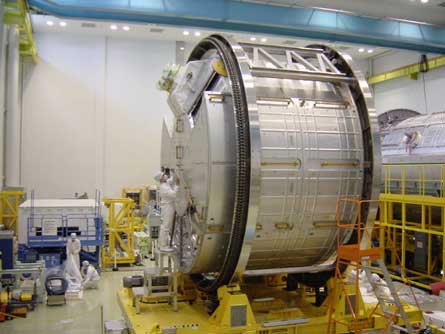The Experiment Logistics Module's (ELM) pressurized section for the Japanese Aerospace Exploration Agency’s (JAXA) International Space Station (ISS) Kibo experiment module arrived at NASA’s Kennedy Space Center in Florida on Monday 12 March.
Russia, Japan, the US and the European Space Agency (ESA) all have space station module's for ISS scientific research.
The US Destiny laboratory is already in-orbit as part of the assembled station. Russia's Multipurpose Laboratory Module, Kibo and ESA's Columbus laboratory are yet to be launched. Kibo and Columbus are planned to be launched in the fourth quarter of this year.
Kibo, which is Japanese for hope, has four parts, the ELM, which has a pressurised section and an exposed section; Kibo's habitable Pressurised Module, which is the largest part; the Exposed Facility, for experiments to be conducted outside Kibo; and a robotic arm, known as the remote manipulator system.

Kibo will provide additional ISS resources for astronauts to conduct science experiments.
Its ELM's pressurized section will serve as an on-orbit storage area for materials, tools and supplies. It can hold up to eight experiment racks and will attach to the top of the larger Pressurized Module.
Kibo’s parts will be assembled in space during the course of three shuttle missions.
The first of those three missions, STS-123, will carry the Experiment Logistics Module's pressurized section aboard the Space Shuttle Endeavour, in the fourth quarter. JAXA astronaut Takao Doi will be the Kibo mission specialist for STS-123.
Source: FlightGlobal.com























